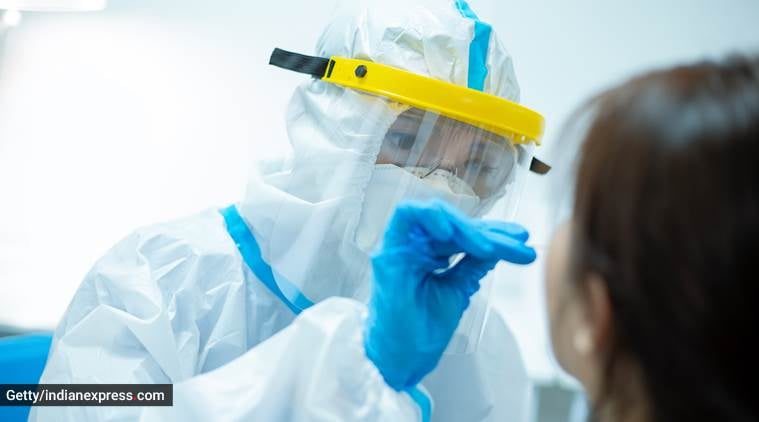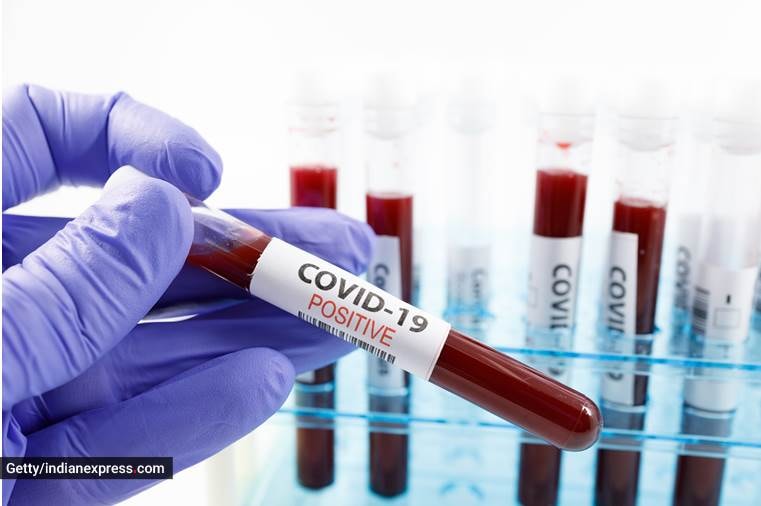The long-term testing strategy for COVID-19 must be based on the network of public and accredited private labs sourcing testing consumables from suppliers, whose quality has been vetted by the central government agencies.

By Dr Chaitali Nikam PhD
When a communicable disease outbreak begins, the ideal response from public health is to begin early and rapid testing. This leads to quick identification/tracing of cases, quick treatment and immediate isolation to avoid the spread of this disease. Early testing also helps to identify high risk contacts; anyone who came into contact with infected people. So, they too can be quickly treated to reduce the intensity of the spread. Early testing is crucial to treat, isolate or hospitalize people who are infected; depending upon severity of infection. Testing is an important stage in the bigger public health picture for alleviating efforts, helping investigators, spread and contagiousness of the disease and characterize the prevalence.
Different types of Covid-19 tests
-
The main type of tests being used to detect the COVID19 are RT PCR, Antibody Testing and Antigen Testing.
-
Some are more reliable than others; no single test is 100 per cent accurate. There are significant differences between them; in the way they work, but also their advantages and limitations, which are unique to each.
Currently, diagnosis of active infection is done with Reverse transcriptase polymerase Chain Reaction; RT-PCR test, the gold standard. The virus is made up of a genetic material called RNA. When the virus enters host cells it uses RNA to replicate itself. So, it’s a direct test for detecting COVID -19 viral particles from nasopharyngeal and oropharyngeal swabs collected and transported via Viral Transport medium (VTM). The RT-PCR test can only tell whether the person has live or very recently dead virus in their body at the time of sample collection. The likelihood of detecting the virus depends on collection methods, severity of infection and how much time has passed since infection. RT PCR tests are accurate but with high TAT and cost, it requires sophisticated equipment and unidirectional settings, trained personnel to run the tests.
Besides this, Serology tests play an important role for patient care and are crucial for the management and surveillance of the disease. These tests offer insight into the virus’s incidence within populations, including symptomatic or asymptomatic infections. They are important in determining the full scope of the disease, engaging the pandemic, surveillance and rebuilding mutual confidence. Potentially detect immunity in COVID-19 recovered individuals. These tests identify patients with solving/resolved infections. Potentially detect immunity in individuals allowing them to continue their routines and possibly avoid unnecessary quarantine.
ALSO READ | Smokers more vulnerable to COVID-19, warns Health Ministry; doctors explain how
Serology tests are different from the RT-PCR test. Instead of measuring genetic material from the actual virus, they measure your body’s response to being infected by the virus. Serology tests detect the antibodies your immune system makes to an infection. Some of these antibodies are short term and some are long term, IgM (Immunoglobulin M) and IgG (Immunoglobulin G) respectively. IgM antibodies against SARS-CoV 2 which develops early on in an infection whereas IgG antibodies against SARS CoV-2 which are mostly found after someone has recovered from infection. Antibodies may be detected in your blood for several weeks after you recover from COVID-19. Although these antibodies might provide some immunity to the COVID-19 virus, there’s currently not enough evidence to know how long these antibodies last or whether past infection with the virus protects you from getting another infection. Studies on antibodies are ongoing to learn more about immunity.
This type of testing is quick to perform, technologies like ELISA or CLIA/ECLIA/CMIA platform can be used. Also performed on blood samples with less TAT and cost as compare to RT PCR.
Antigen test: An antigen is the part of virus that elicits an immune response. Antigen tests look for antigen proteins from the viral surface. An antigen test can only reveal whether a person is currently infected with Covid-19. Before/after the infection has passed, antigens won’t be present.
A swab from the nose is collected for this test, where there’s a high likelihood of virus particles being present. According to agencies, positive results from antigen tests are highly accurate, high specificity. But there is a higher chance of false negatives, so negative results do not rule out infection. Negative results antigen test need to be confirmed with a PCR test; moderate sensitivity. This test can be used as a point of care testing (POC). This is kind of fast-track testing, which is tracing positive cases and ease burden on the current RT-PCR test. It takes only 30 mins and cheaper.
ALSO READ | People who wear face masks do not neglect other safety measures: Study
The process of doing these tests for a common man
PCR testing needs extracted RNA (genetic material) from swabs. RNA extraction is process which comprises of lysis, binding and washing steps; with incorporation of Internal control(IC). This IC is guaranty of proper RNA extraction and should be read at the time of result interpretation along with other Quality control (QC). Extraction can be done manually, by semi-automated/fully automated instruments. After extraction; addition of enzymes and primers and probes specific for covid-19 (designed in such a way that it will bind and amplify only & only Covid-19 specific genes) mixed with RNA in particular combination. This procedure also can be performed manually or automated with the help of liquid handler robotic arm systems. PCR uses this RNA for amplification. The first step in the testing process is to convert the viral RNA into DNA using the enzyme reverse transcriptase so name RT PCR. Once this is done chemicals are used to amplify Covid-19 specific sequence so it can be read by the PCR instrument; Thermal Cycler and with precise software. PCR consists of three steps denaturation, annealing and elongation with exact number of cycles along with specific temperature. By setting up the threshold results can be analyzed and reported as RNA Detected or Not Detected. This overall series of procedure takes 4-5 hrs.

Antibody testing/Serology testing: The platforms for COVID-19 serology tests in the market include lateral flow assays, ELISA (enzyme-linked immunosorbent assays), chemiluminescent microparticle immunoassay (CMIA) and chemiluminescent immunoassays (CLIA) / electro-chemiluminescence immunoassays (ECLIA) for detection of specific or total antibodies. These assay types differ in how they detect antibody-antigen binding. The plasma/serum sample is added in the small wells of an ELISA plate (protein coated microtiter plate). In the test, the coated protein combine with COVID-19 antibodies in sample, addition of conjugate binds with complex of antibody-antigens on the microplate. With the substrate, it will generate an amount of color. The depth of color is relative with the content of the COVID-19 antibody, when the value of color is greater than the cut-off value, can be declared as positive for Covid -19 antibodies. It can be performed manually or automated platforms.
Antigen testing: Antigen tests seek out specific proteins only found in the virus, which the body’s immune response recognises as ‘foreign’. It is a POC test, performed outside the conventional laboratory setting. Most COVID-19 antigen tests target the ‘spike protein’ present on surface of the coronavirus. A swab from the nose is collected for this test, where there’s a high likelihood of virus particles being present. The swab is then immersed in a solution that deactivates the virus, and then transferred onto a test strip. The test strip contains antibodies that bind to these specific proteins and hold them in place as the fluid spreads as a control band and test band. If the sample is positive for coronavirus, coloured lines will show up on the paper strip in 15-20 minutes.
How will testing evolve in India?
Diagnostic testing is at the heart of policy debate around COVID-19 interventions in India. As of June 1, 2020, India had conducted approximately 3.8 million tests from the commencement. But according to experts testing capacity is still insufficient for the needs of the population. The Indian Council for Medical Research (ICMR) recommends RT-PCR tests as the gold standard for COVID-19 diagnosis. The Indian government recommends pooled sample screening by PCR in cohorts were positivity rates of <5 per cent; to increase laboratory capacity for screening surveillance samples. Also, authorities are simultaneously looking for a reliable rapid antibody test for epidemiological and surveillance purposes along with POC testing like rapid antigen test which decreases the burden on RT PCR labs.
ALSO READ | Heart inflammation observed in recently recovered COVID-19 patients: Study
Health is a state subject in India. While the central body designs the strategy, the states implement it. This has resulted in variations among states in the scale of testing and preparedness and response in each state. The government aims to double the number of tests; means around 200,000 tests /day. Such a large-scale increase in testing in India would put the testing supply chain’s scaling-up ability to the hook. Testing algorithms and criteria will also continually adapt to new testing technology and protocols.
Daily reporting of the number of tests carried out and TAT like parameters should be used as a key performance indicator. Routine reporting of TAT would enable faster detection of testing bottlenecks and enable their resolution.
The long-term testing strategy for COVID-19 must be based on the network of public and accredited private labs sourcing testing consumables from suppliers, whose quality has been vetted by the central government agencies; inclusive of indigenous kits and supplies. India has a vast and well-functioning private sector with excellent supply chain. Organizing the testing supply chain to fully leverage such capabilities is essential for growth of testing in India.
(The writer is the head of Covid Laboratory, Thyrocare)
? The Indian Express is now on Telegram. Click here to join our channel (@indianexpress) and stay updated with the latest headlines
For all the latest Lifestyle News, download Indian Express App.
Source: Read Full Article





